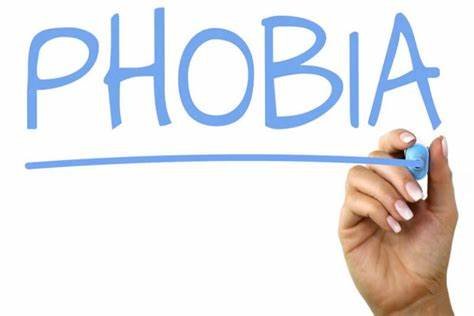“The New Norm” has become a buzzword in mental health spaces, but let’s be honest—this concept can be a slippery slope to complacency. Has life truly gone to shit, or is your therapist subtly nudging you to simply accept the situation as it is? If so, as Dr. Phil would ask: “How’s that working for you?”
“The New Norm” often suggests that certain struggles or circumstances are fixed, that improvement isn’t on the horizon. It’s a way to encourage clients to find peace with their current situation—but sometimes, that’s not helpful. What’s the point of acceptance if it stops you from striving for real change?
The Dilemma of Help: Misalignment in Mental Health
Here lies the real issue—what does “help” even mean? Mental health professionals, peers, and therapists can’t seem to agree. The lack of consensus complicates the process of care and leaves clients confused about their path to recovery. Misapplied techniques, inaccurate diagnoses, and clumsy interventions make progress elusive.
Take radical acceptance—a valuable skill in theory but often misused. When applied without nuance, it can encourage resignation rather than resilience. Accepting emotions is crucial, but accepting stagnation can be disabling. There’s a fine line between embracing reality and surrendering to it, and unfortunately, many practitioners overlook where that line is drawn.
The Fragmented State of Mental Health Care
The mental health field lacks uniformity, even at the most basic level. Walk into a seminar or team meeting, and you’ll witness it firsthand—disparate opinions and conflicting strategies. Best practices shift depending on the provider, agency, or framework guiding care.
Even the fundamental question—“What does it mean to help?”—sparks endless debate. This fragmentation stems from the individuality of mental health. There’s no one-size-fits-all solution because each client’s needs are shaped by their identity, experiences, and traumas.
For those aligned with DSM frameworks, mental health is a constellation of symptoms demanding clinical intervention. For others, mental health is seen as a reflection of environmental, social, and systemic traumas. Neither perspective is wrong—but both complicate defining “help.”
Self-Awareness Isn’t Always Enough
Insight is often lauded as the gateway to healing, but it doesn’t guarantee right action. Understanding your patterns doesn’t always translate to healthier decisions. Clients may recognize their destructive tendencies yet remain trapped in cycles of sadness, anger, or avoidance.
Worse still, when therapists misjudge the severity of symptoms or miscalculate risk, harm can escalate. Without clarity on the intensity or chronicity of a client’s issues, safety is jeopardized. A therapist who downplays symptoms risks neglect, while one who over-pathologizes risks stripping autonomy.
Peer Support: The Unspoken Risks
Peer and social relationships add another layer of complexity. Friends can’t always practice radical acceptance.
Consider this—how many hurtful or disruptive incidents must occur before even the most loyal friend steps back?
Mental health professionals emphasize accepting people “where they’re at.” But in reality, friendship and peer support have limits.Peers are not immune to burnout, and some behaviors—though driven by illness—warrant distance or external intervention.
Even in families, certain crises cross the line into dangerous territory. Sometimes, calling the police or seeking emergency care is the only rational choice. Mental health symptoms can impair judgment and threaten not only the individual but their community.
Acceptance, in this case, must be balanced with boundaries and realism.
Recognizing the Signs of Crisis
True friendship requires understanding the nuances of mental health. Know the difference between “struggling” and “unsafe.” Pay attention to red flags—erratic behavior, isolation, or expressions of hopelessness.
Support doesn’t always mean presence; sometimes, it means guiding someone toward professional help.
Friends aren’t clinicians, and expecting them to manage acute symptoms is unfair. Peers should recognize when to step in—and when to step away for their well-being. This delicate dance, though challenging, preserves relationships and ensures the individual in distress receives the care they need.
The Reality of Radical Acceptance
Radical acceptance isn’t mutual.
Sometimes, you will show up for friends who won’t—or can’t—reciprocate. In recovery, friends may drift away, unable to manage the emotional weight of another’s illness.
It’s painful, but part of healing involves seeking new connections—people who embrace your journey without making your struggles about themselves. Not everyone is equipped to hold space for mental illness, and that’s okay.
True radical acceptance begins with self-acceptance. Whether others stay or leave, your journey toward healing must continue.
Final Thoughts:
“The New Norm” doesn’t have to mean settling for stagnation. Recovery isn’t linear, but growth is always possible.
Surround yourself with those who accept your journey while recognizing the limits of their role. And remember—acceptance and change can coexist.
Max E. Guttman is the owner of Mindful Living LCSW, PLLC, a private mental health practice in Yonkers, New York.
- Max E. Guttmanhttps://mentalhealthaffairs.blog/author/max-e-guttman/
- Max E. Guttmanhttps://mentalhealthaffairs.blog/author/max-e-guttman/
- Max E. Guttmanhttps://mentalhealthaffairs.blog/author/max-e-guttman/
- Max E. Guttmanhttps://mentalhealthaffairs.blog/author/max-e-guttman/







